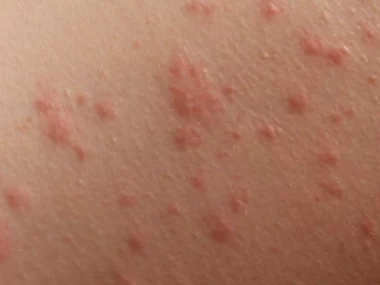Understanding Sexually Transmitted Diseases (STDs): Types, Causes, Prevention Strategies, and Myths Debunked
Sexually Transmitted Diseases (STDs), also referred to as Sexually Transmitted Infections (STIs), are infections spread primarily through sexual activity and can affect both men and women, potentially leading to severe health consequences if left untreated. This article will examine various types of STDs, their causes, prevention measures and dispel myths regarding contracting them from toilet water splashes.
Types of STDs
There is a wide range of sexually transmitted diseases (STDs) caused by different pathogens, including bacteria, viruses, and parasites. Common STDs include:
- Chlamydia: Caused by Chlamydia trachomatis bacteria, this infection usually shows no outward symptoms but may lead to pelvic inflammatory disease in women and infertility for both sexes if left untreated.
- Gonorrhea: Caused by Neisseria gonorrhoeae bacteria, gonorrhea can lead to painful urination and discharge in addition to possible PID and infertility if untreated.
- Syphilis: Caused by Treponema pallidum bacteria, syphilis progresses over time and may lead to various symptoms, including sores and rashes, if left untreated – including neurological damage.
- Human Papillomavirus (HPV): HPV is a group of viruses that may lead to genital warts and increase your risk for cervical, anal, and other types of cancers.
- Herpes Simplex Virus (HSV): HSV type 1 typically causes oral herpes, while HSV type 2 causes genital herpes. Either form can produce painful sores that remain present for life – yet stay within our bodies indefinitely.
- Human Immunodeficiency Virus (HIV): HIV attacks the immune system, leading to acquired immunodeficiency syndrome (AIDS), which weakens your body’s defenses against infections and diseases.
- Hepatitis B and C are viruses that attack the liver, leading to severe liver damage and other complications.
How are STDs transmitted?
Sexually Transmitted Diseases (STDs) are most often transmitted through sexual activities that involve exchanging bodily fluids, where infectious agents such as bacteria, viruses, or parasites could enter and cause various STDs. Common forms of transmission include:
- Vaginal Intercourse: STDs can be transmitted between partners through vaginal intercourse if one partner has become infected through the exchange of vaginal fluids, which passes the infection from one to another.
- Anal Intercourse: When one partner is infected with STDs, an oral encounter may facilitate its spread to their partner through intimate physical contact due to the delicate lining of the rectum being susceptible to tears and abrasions that allow pathogens in.
- Oral Sex: Engaging in oral sex with an infected partner can increase the chances of STD transmission through secretions found within either their genitalia or anals, which could transmit pathogens through oral contact.
- Genital-to-Genital Contact: Some STDs, like herpes, can be passed from one genital region to the other through skin-to-skin contact without penetration of the cervix.
- Sharing Sex Toys Without Proper Cleaning/Protection: By sharing sex toys without proper cleaning/protection protocols in place, STDs may be transmitted.
- Mother-to-Child Transmission: HIV and syphilis can be transmitted from mother to baby during childbirth or breastfeeding, potentially placing their offspring at risk of infection.
Common STDs and Their Transmission
- Chlamydia and Gonorrhea: These infectious bacterial diseases can often be passed between partners via sexual contact (vaginal, anal, oral).
- Syphilis: Syphilis can be transmitted through direct contact with sores caused by the disease (chancre), such as those on the genital area, anus glands, lips, or mouth.
- Human Papillomavirus (HPV): HPV can be transmitted through skin-to-skin contact during vaginal, anal, and oral sex as well as through nonpenetrating genital connections between individuals without penetration.
- Human Immunodeficiency Virus (HIV): HIV can be transmitted primarily through unprotected sexual encounters, sharing needles contaminated with HIV, or from infected mothers to their offspring during birth or breastfeeding.
- Herpes Simplex Virus (HSV): HSV can be transmitted through direct skin-to-skin contact with infected sores or blisters, usually during sexual activities.
- Hepatitis B and C: These viral infections can be transmitted sexually through contact with infected bodily fluids such as semen, vaginal fluid, or blood.
Causes of STDs
STDs are transmitted primarily through sexual activities that involve exchanging bodily fluids, such as vaginal, anal, and oral sex. Once infected individuals come in contact with one another, they can transfer the disease directly.
Herpes and syphilis can also be transmitted through direct skin-to-skin contact, even without sexual intercourse.
How to Prevent STD Transmission
Preventing STD transmission involves engaging in safe sexual behavior and taking precautionary steps, including:
- Consistent and appropriate use of condoms or dental dams during sexual activities.
- Receiving vaccination for preventable STDs such as HPV and Hepatitis B. 3. Limiting sexual partners and being in a mutually monogamous relationship with someone uninfected.
- Early testing and treatment for STDs to avoid complications and further transmission. 5. Avoid sharing needles or other sexual implements without proper cleaning and protective measures.
Prevention of STDs
- Abstinence: One effective strategy for preventing STDs is abstaining from sexual activity altogether.
- Condom Usage: Utilizing latex or polyurethane condoms during sexual encounters can significantly lower the risk of STD transmission. These practical barriers are available as latex or polyurethane models that offer optimal protection from most STDs.
- Vaccinations: There are vaccines available to protect against certain STDs, such as HPV and Hepatitis B. By getting vaccinated against these infections, vaccination can help safeguard against their spread.
- Regular Testing: Sexually active people should conduct regular screening tests for STDs, especially those with multiple partners. Early detection allows for prompt treatment that reduces complications and further transmission risk.
- Mutual Monogamy: Partnering with someone who tested negative for sexually transmitted diseases can significantly decrease the risk of infection.
Understanding how STDs spread is critical in minimizing one’s risk of contracting and spreading these infections while communicating openly and honestly with sexual partners is also crucial in stopping STD transmission.
Can you get STD from toilet water splashing
STDs and Toilet Water Splashes
Contrary to popular belief, STDs cannot be transmitted via toilet water splashes. Pathogens responsible for STDs, such as bacteria and viruses, do not survive outside the human body for an extended period. Furthermore, toilet water contains various chemicals and additives which further diminish survival chances for such microorganisms.
STDs must come into direct and intimate contact with infected bodily fluids to be transmitted; therefore, the risk of contracting one from a toilet seat or water splash is negligible.
Other infections gotten from toilets
Toilets may also carry other infections easily contracted from them, such as HSV-2.
Though STDs do not typically spread via toilet water splashes, other infections and illnesses can be picked up from public or poorly maintained private toilets. While the risk is generally low for contracting these infections from toilets, practice good hygiene practices. These hygiene practices minimizes the potential risks and is essential to stay safe from potential outbreaks associated with toilets such as:
- Gastrointestinal Infections: Fecal matter contains bacteria and viruses such as Escherichia coli (E. coli), norovirus, and rotavirus. They may pose risks of transmission through poor hygiene practices or poor cleaning. Making contact between these pathogens on contaminated toilet seats or handles due to poor cleaning or hygiene practices creates a potential route for transmitting infections such as E. coli. If these pathogens come in contact with any surfaces touched after contact with them, then touching their mouth, nose, or eyes could result in infection transmission, potentially leading to infections of E. coli.
- Urinary Tract Infections (UTIs): UTIs are urinary tract infections caused by bacteria entering. While toilets do not directly contribute to UTIs, poor bathroom hygiene may contribute to their transmission – wiping from back to front after using the toilet can transfer bacteria from the anal area into the urethra and cause UTIs, particularly among women.
- Skin Infections: Staphylococcus aureus (Staph) and other bacteria may linger on surfaces for some time – including toilet seats – with Staph in particular present in abundance. When open cuts or wounds come into contact with these surfaces, there is a slight chance they could become infected and cause skin infections.
- Respiratory Infections: Some respiratory infections, such as the common cold or influenza, can spread via droplets released when flushing a toilet – particularly relevant in public restrooms with poor ventilation systems.
- Fungal Infections: Candida, the fungus responsible for yeast infections, can be present in toilet areas. Individuals with compromised immune systems or certain predisposing factors are particularly prone to these infections.
Preventive Measures
To lower your risk of infection from toilets or public restrooms:
- Maintain Good Hand Hygiene: After using the toilet, wash your hands thoroughly with soap and water to prevent infections from spreading further. This is the most efficient way of combatting potential outbreaks.
- Apply or clean toilet seat covers before use: Public restrooms often offer disposable toilet seat covers, while you could also use toilet paper to create an effective barrier between you and the seat.
- Avoid Touching Your Facial Structures: Take extra caution not to touch any parts of your face after using a public restroom until you have washed your hands thoroughly and washed any residue, including mouth, nose, or eye contact.
- Flush With Lid Closed: To minimize droplet spread, close the toilet lid before flushing to minimize droplets escaping.
- Regularly clean and disinfect your home toilet: For optimal sanitation in your bathroom, utilize appropriate cleaning agents when disinfecting.
Maintain good personal hygiene and practice cleanliness in shared spaces to reduce your chances of infection transmission and spread. Being proactive about cleanliness will go a long way toward helping prevent the spread of germs.
Toilet water diseases and Prevention
Does toilet water carry diseases?
Toilet water may contain harmful bacteria and viruses, mainly if not maintained regularly. When flushing a toilet, tiny droplets of water and particles from within its contents can become aerosolized, landing on nearby surfaces like toilet seats, handles, or floors and spreading pathogens that could be responsible for diseases like pneumonia or meningitis. Although the risk associated with toilet water infections is low, taking preventative steps to lower any potential threats is essential:
- Practice Good Hand Hygiene: Following each use of the toilet, be sure to wash your hands with soap and water thoroughly – this is one of the best ways to prevent germs and bacteria from spreading from person to person.
- Utilize Toilet Seat Covers or Paper: In public restrooms, using toilet seat covers or creating a barrier with toilet paper will prevent direct contact between users and the toilet seat.
- Close the Toilet Lid Before Flushing: Before flushing; close the toilet lid to reduce aerosolized droplets from entering the air. This step is particularly crucial in shared bathrooms or when someone in your household is sick.
- Regular Clean and Disinfect of the Toilet: If you are responsible for keeping the home toilets pristine, regularly use appropriate cleaners to disinfect them – paying particular attention to their seat, handle, and frequently touched surfaces.
- Avoid Placing Personal Items on Bathroom Surfaces: Avoid placing personal items such as phones or bags near the toilet when placing them in your bathroom, such as phones and bags.
- Apply Effective Cleaning Techniques: When it comes to public restrooms or shared facilities, be sure to follow appropriate cleaning protocols, such as disinfectants and disposable materials.
- Flush with the Lid Down: For optimal results, remind others to close the toilet lid before flushing to reduce airborne particles that could spread into the environment.
- Avoid Contact with Open Cuts or Wounds: If you have open cuts or wounds on any part of your body, try to stay clear from public restroom surfaces to protect your injuries from direct contact.
Although the risk of contracting an infection from toilet water is low, maintaining good personal hygiene and taking preventative steps to promote cleanliness can lower any potential danger. Furthermore, most diseases spread directly between infected individuals or through surfaces contaminated with disease spores, so maintaining cleanliness and hygiene are crucial in combatting any further spread.
Conclusion
Sexually Transmitted Diseases (STDs) pose a global public health challenge. Understanding their types, causes, and prevention measures is vital to curtailing their spread. Abstinence, condom usage, vaccinations, regular testing, and mutual monogamy are essential in this effort.
Furthermore, dispelling myths surrounding toilet water splashes, as these can create unnecessary fear among users and lead to misinformation being spread via misperceptions about this infection, can play a pivotal role in curbing prevalence while improving sexual health overall. Proper education and awareness are essential in curtailing STD prevalence while simultaneously improving sexual health among its recipients.






